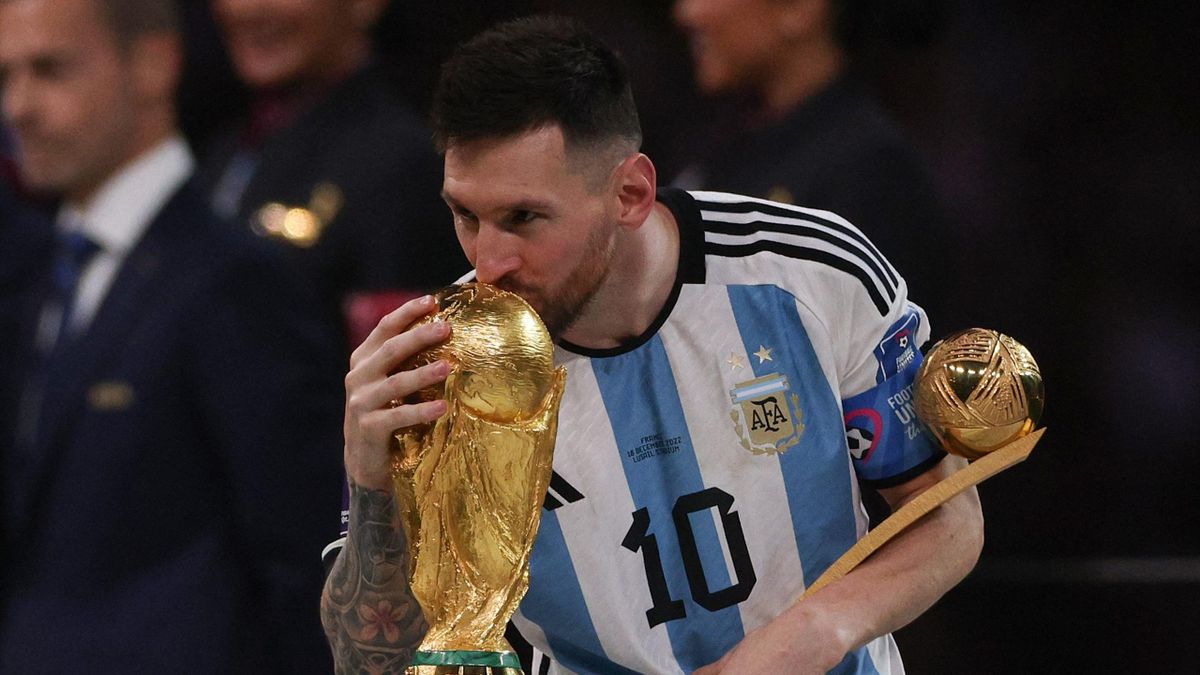There are few more iconic trophies in world sport than the one that is presented to the winners of the FIFA World Cup every four years. With its resplendent and very striking appearance, the gold award has come to symbolise the pinnacle of the most popular sport on earth. For the first time, it was Lionel Messi who found himself on the winning team in a World Cup final, and as the captain, got the opportunity to hold the iconic trophy aloft after a thrilling final with Argentina beating France after extra time and penalties.

The trophy that most fans probably picture is not actually the original. The Jules Rimet, named after a former FIFA president who was instrumental in creating the tournament in 1929, was the one the late Bobby Moore famously held aloft when England triumphed in 1966. Nike, the Greek goddess, was the figure depicted on the trophy.
In 1970, Brazil claimed their third World Cup triumph thanks to a Pele-inspired super team and, as such, it was decided that they had won the trophy for keeps. With Brazil afforded the privilege of keeping the Jules Rimet trophy in perpetuity, a replacement was needed. The Jules Rimet trophy was sadly stolen from a display case at the Brazilian Football Confederation headquarters in Rio de Janeiro on 19 December 1983 and has never been recovered.
That was where the trophy that is recognised today came in. The ‘FIFA World Cup Trophy’ was commissioned ahead of the 1974 World Cup and unveiled by the world governing body in that year. It depicts two human figures holding up the Earth. It has been used ever since and was last lifted by France as the reigning champions from the 2018 edition of the tournament in Russia.
One thing was for sure: the stage had been set for Messi once more to see if he could deliver the coveted trophy to his country just as Diego Maradona had before him – and he did, eventually. Despite scoring twice and with Argentina looking certain to clinch a famous triumph, it took until after a Kylian Mbappe hat-trick, extra time and penalties for him to finally seal the World Cup glory that had been elusive for him for so long.
It was one of the most astonishing World Cup finals of all time, with the ‘desert duel’ between Messi and Mbappe living up to all expectations – and more – as they shared five goals between them, with Argentina and Messi coming out the victors after the drama of penalties.
IS THE WORLD CUP TROPHY REAL, SOLID GOLD?
Officially, the World Cup trophy is described as ‘solid’ gold. It is 36.5cm tall and is made of 6.175kg or 30,875 Carats of 18 karat (75%) gold. It has a base of 13cm in diameter which features two strips of malachite.
As for the stolen Jules Rimet trophy, that was made of gold-plated sterling silver. It was 35cm tall and weighed 3.8kg.
HOW MUCH IS THE WORLD CUP TROPHY REALLY WORTH?
The amount of gold that makes up most of the World Cup trophy was valued at approximately $161,000 (£131,800) in 2018, but the trophy as a whole has been valued at $20 million (£16.4 million).
This estimate makes the FIFA World Cup Trophy by far the most expensive sporting trophy. Coming in a very distant second is the Woodlawn Vase, presented to the winner of the Preakness Stakes, one of American horse racing’s triple crown.
ARE THE WORLD CUP WINNERS ALLOWED TO KEEP THE TROPHY?
The winners of each edition of the World Cup do receive a bronze replica of the trophy but are not allowed to keep the official one. The bronze replica is at least gold-plated, despite not being solid gold.
Fans can view the World Cup trophy at the FIFA World Football Museum in Zurich, Switzerland from time to time, but it also tours the world for ceremonies and appearances at draws and official events.
The only example of a team keeping the World Cup trophy came back in 1970 when Brazil won their third title because this was a quirky stipulation from the founder of the tournament, Jules Rimet.













